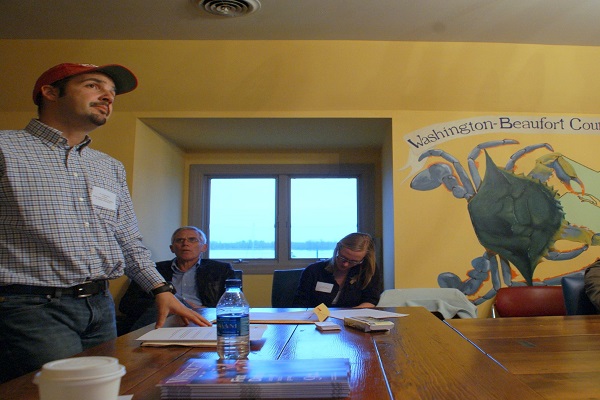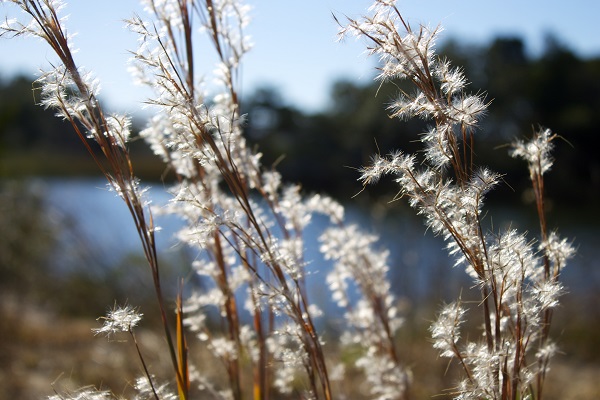CONSIDERING COASTAL QUESTIONS: Sea Grant Research Tackles Important Issues
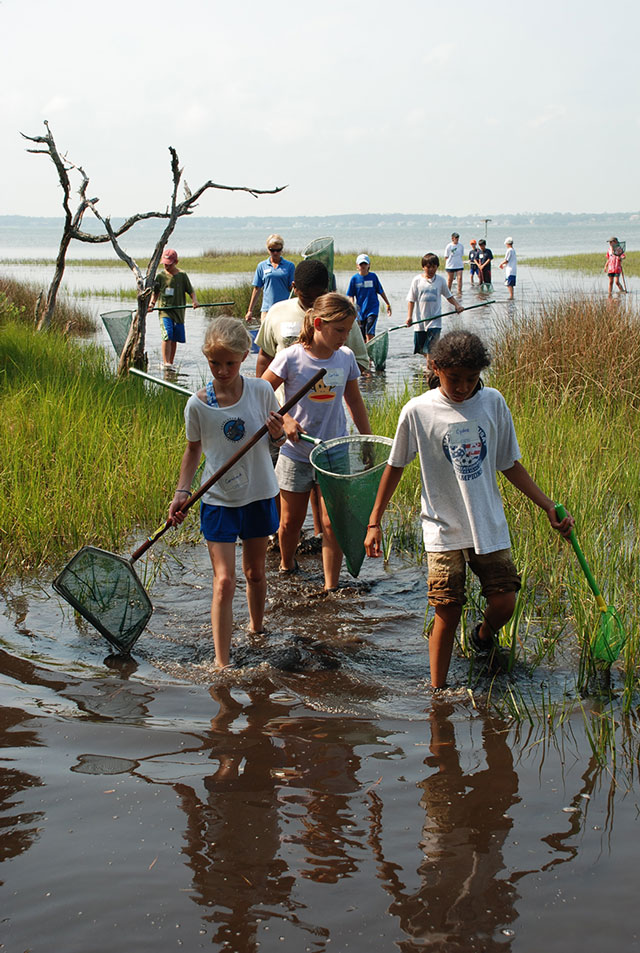
Researchers starting new two-year North Carolina Sea Grant projects are tackling topics across a wide spectrum: algal blooms, storm surge, environmental education, southern flounder stocks, coastal communities, public health, and aquaculture for finfish and shellfish.
“We are pleased to fund research on such an array of important coastal issues,” notes Executive Director Susan White. “The projects not only reflect our program’s current strengths, but they also offer promise for our future work with coastal communities and other partners across the state.”
White cites the timeliness of the new research, just as the National Sea Grant College Program is taking a full year to celebrate its 50 years of coastal work. “This July, we also will mark the 40th anniversary of North Carolina earning full Sea Grant College Program status with complete research, extension, communications and education elements,” White adds.
The new core projects include researchers at varied universities, including East Carolina University, North Carolina State University, the University of North Carolina at Chapel Hill, UNC Wilmington and Duke University. Some projects also include community partners.
“Many take multidisciplinary approaches and/or include researchers from more than one university,” says Deputy Director John Fear. “Overall, North Carolina Sea Grant’s portfolio reflects a keen understanding that the ‘grand challenges’ we face have multiple interrelated factors.”
Federal funding comes from the National Oceanic and Atmospheric Administration through National Sea Grant, along with state funding through the University of North Carolina system. Each core research project also includes matching funds from the respective university.
EXISTING AND EMERGING TOPICS
The following descriptions of the new projects, which will run through early 2018, note the lead investigator, as well as other participants.
Fishery Management Implications of Environmentally Determined Sex and Biased Juvenile Sex Ratios in Southern Flounder
Russell Borski of NC State, with Jeff Buckel, Harry Daniels, John Godwin and James Rice, all of NC State
The research team seeks to identify sex ratio variations in juvenile flounder in relation to habitat variables found in coastal North Carolina nursery areas. This includes looking at changes in the ratio of males and females from first spring to first fall, and then the following spring. In the laboratory, the team also will test whether temperature variations in the nursery habitats could skew the ratios.
The results could fit into management decisions for this commercial fishery, in which female flounder grow larger than males. The data also could improve models of spawning stock biomass, an important management factor.
Interactions between Waves, Flooding and Beach Morphology During Storm Events
J.C. “Casey” Dietrich of NC State, with Rick Luettich of UNC-Chapel Hill and Margery Overton of NC State
Beach erosion during storm events can devastate the natural environment and coastal communities. This research team seeks to improve simulations of coastal flooding in regions where the beach erosion is highly dynamic. Such simulations are used in North Carolina and elsewhere for designing buildings, establishing flood insurance rates, and supporting real-time decisions during storm events.
The research will review effects of hurricanes Isabel and Irene on oceanfront and soundside shorelines for Hatteras Island, as well as how storm-induced flooding pushed inland. New predictions will be strengthened as the data are coupled with a beach-erosion model. The team will share results with local- and state-level partners to show connections not only throughout the island system but also related impacts on mainland communities.
Effects of Oyster Grow-Out Cages on the Condition and Ecosystem Services of Seagrass Communities
Joel Fodrie of UNC-Chapel Hill, with James Morley and Abigail Poray, also of UNC-Chapel Hill, and Katherine McGlade of Hatteras
These researchers will evaluate the effects of oyster aquaculture on habitats with submerged aquatic vegetation, known as SAV or seagrass. The team will look at two types of gear: floating bags and bottom-rack cages. The study will identify changes not only in SAV density but also in fish and shellfish communities at each research site, as well as in control sites with SAV but no cultivation gear.
The shellfish aquaculture industry suggests that its growth has been hindered by current North Carolina fisheries policies that prevent new oyster leases in areas with existing or historic SAV presence. The project builds upon earlier Sea Grant-funded work looking at relationships between oyster aquaculture and SAV.
“Next Generation” Coastal Communities: Leveraging Social Capital to Build Local Leadership Capacity
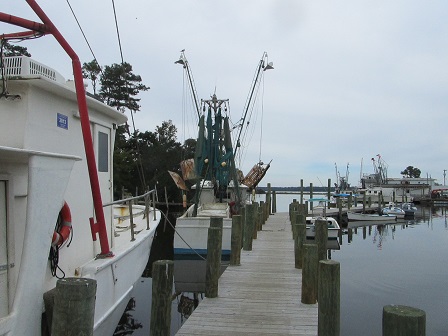
David Griffith of ECU, with Barbara Garrity-Blake of Duke and Susan West from Buxton
North Carolina’s fishing communities are changing, alongside transformations in fishing across the southeastern United States, bringing new directions of coastal and economic development. The fishing industry faces varied issues, including competition from seafood imports, changing demographics, regulations, rising costs, and the threat of more intense and frequent storms. Young fishermen are challenged to step up as retiring fishermen withdraw from community leadership positions they may have held for years.
Working in 15 fishing communities along the N.C. coast, from Wanchese to Calabash, the team will look at complicated social networks to identify current and potential leaders, who then will be invited to participate in workshops. The combination of research and outreach is expected to strengthen existing organizations, such as the North Carolina catch groups, and create new ties among coastal fishing communities. Sara Mirabilio, a Sea Grant fisheries specialist, also will participate in the project.
Understanding the Public Health Risk Associated with Under-Dock Oyster Culture and Aquaculture Activities in the Estuarine Waters of North Carolina
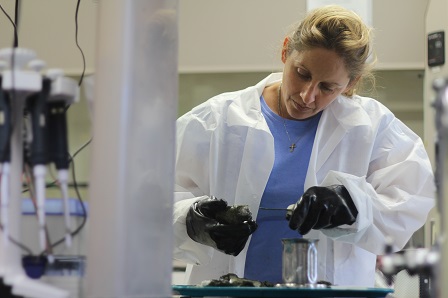
Rachel Noble of UNC-Chapel Hill, with Brett Froelich, also of UNC-Chapel Hill
Do oysters grown under private docks carry a higher risk of Vibrio infection than those that are wild caught or commercially grown? This research team will gather environmental and meteorological data from each type of oyster location. They anticipate their analysis will feed models to forecast when, where and why two species of Vibrio may be likely to occur in N.C. waters.
By determining Vibrio concentrations and its varied ecological relationships, the team expects to improve assessments of the bacterium’s varied risks, including those related to human health. The project includes outreach with officials within the N.C. Division of Marine Fisheries who focus on the shellfish sanitation and shellfish leasing. The research team also will develop proposed updates for the under-dock program manual, as well as a video for shellfish gardeners.
Hypoxia and Algal Bloom Forecasting for the Neuse River Estuary
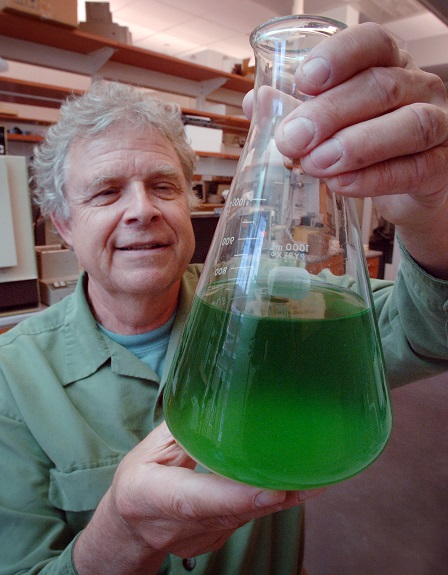
Daniel Obenour of NC State, with Hans Paerl of UNC-Chapel Hill
The Neuse River Estuary is home to nursery areas for key fisheries, including where the river meets the Pamlico Sound along the state’s central coast. It has a history of oxygen depletion, known as hypoxia, as well as algal blooms, despite efforts to improve water quality. Nutrient loads, including from urban and agricultural activities, magnify related impacts, such as fish kills. Also, short- and long-term climate variations may be factors in these problems.
Building upon past Sea Grant research and related projects, the team will develop a model to predict the severity of summer hypoxia and algal blooms based on spring nutrient loads and other hydrological and meteorological variables. A review of water-quality data from multiple decades will help identify human and natural factors leading to algal blooms and oxygen depletion. The resulting model will provide near-term forecasts relevant to fisheries management, along with long-term forecasts useful for watershed and water-quality management.
Going with the Flow: New Approaches for Determining Drivers of Toxic Cyanobacteria Blooms in the Cape Fear River, N.C.
Hans Paerl of UNC-Chapel Hill, with Nathan Hall of UNC-Chapel Hill, Scott Ensign of Aquatic Analysis and Consulting, and Astrid Schnetzer of NC State
The Cape Fear River watershed includes communities in the Triangle and Sandhills, as well as in the state’s southern coastal region.
A number of communities in the middle of that region are partners on this project to better understand — and predict — blooms of cyanobacteria and related toxins.
Project data and bloom forecasts will consider multiple influences on the development of new algal blooms, including measurements of low levels of toxins. This will be critical information for water-treatment plant managers who make daily decisions regarding water flowing into and out of facilities that serve millions of North Carolina residents.
Building Climate Literacy and Coastal Hazard Resilience through Intergenerational Transfer
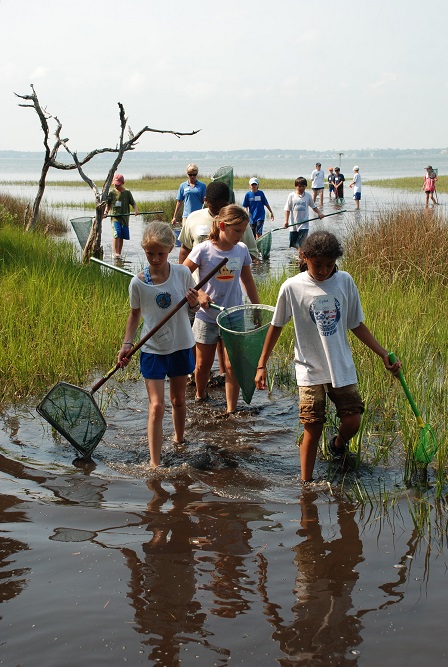
Markus Nils Peterson, NC State, with Howard Bondell, Sarah Carrier, Kathryn Stevenson and Renee Strnad, all of NC State
What happens when you empower students to become teachers? These NC State researchers want to know how climate-change education might “trickle up” from students to others in the community. Preliminary results show activities relating climate change to wildlife will affect the students’ climate literacy, as well as their engagement in behaviors such as energy conservation.
This study will further build a curriculum to include service-learning projects with community partners such as the Albemarle-Pamlico National Estuary Partnership, N.C. Coastal Federation, the N.C. Aquariums and NC State’s Science House. By linking learning about climate change with potential changes in local communities, researchers anticipate students will share their experiences with their parents. The team will test how the curriculum affects climate literacy of the students, parents and teachers.
Overcoming Technical Barriers to Cost-Effective Production of Marine Finfish Fingerlings and Expanded Grow-out Production: Optimizing Nursery Stocking, Feeding and Harvesting Strategies
Wade Watanabe of UNC Wilmington, with Md. Shah Alam and Patrick Carroll, also of UNC Wilmington
A major cost to commercial marine fish farmers is the price of juvenile fish, or fingerlings, that are purchased from a hatchery, then grown out to market size. The UNCW team seeks to improve affordability and availability of black sea bass fingerlings by maximizing stocking densities and minimizing the size at which they can be safely harvested from nursery tanks.
The results, including identifying optimal diets, should boost annual production of a hatchery facility and lower the price per fingerling to growers. The team will collaborate with fish farmers eager to demonstrate the methods.
ENHANCING REGIONAL COLLABORATIONS
In addition to the state-focused core projects, Lisa Schiavinato, North Carolina Sea Grant’s coastal law, policy and community development specialist, is part of a South Atlantic Sea Grant regional project: Advancing Understanding of Risk: Increasing Accuracy of Hazard Damage Assessment Tools by Improving Base Data and Analyzing Opportunities and Barriers for Use in Adaptation Planning.
That team is led by Shana Jones of the University of Georgia, along with J. Scott Pippin also of UGA, Jason Evans of Stetson University in Florida, Kirstin Dow of the University of South Carolina, and Victor Flatt of UNC-Chapel Hill and its Center for Climate, Energy, Environment, and Economics, known as CE3.
Schiavinato, who also serves as co-director of the N.C. Coastal Resources Law, Planning and Policy Center, notes the interdisciplinary team seeks to improve resilience in coastal communities through working with local partners on risk communication and data development to build hazards-planning capacity.
Team members from the Carolinas include Jessica Whitehead of North Carolina Sea Grant and Liz Fly of South Carolina Sea Grant as extension collaborators. They will work directly with the communities of Nags Head in North Carolina and Beaufort, South Carolina, to address emerging legal and policy questions that local governments may face in their efforts to use planning processes to build community resilience to natural hazards.
The team will assist decision makers to identify additional vulnerable public infrastructure to map. They also will provide legal analyses that consider existing and potential barriers to the communities’ implementation of adaptation measures.
Overall, White expects the new projects will add to the synergy across Sea Grant efforts in North Carolina and the region.
“These two-year projects complement and expand our ongoing research efforts, including minigrants and fellowships, as well as our extensive outreach program. The results will provide important data and recommendations to long-time partners and encourage new collaborations.”
This article was published in the Spring 2016 issue of Coastwatch.
For contact information and reprint requests, visit ncseagrant.ncsu.edu/coastwatch/contact/.
- Categories:
